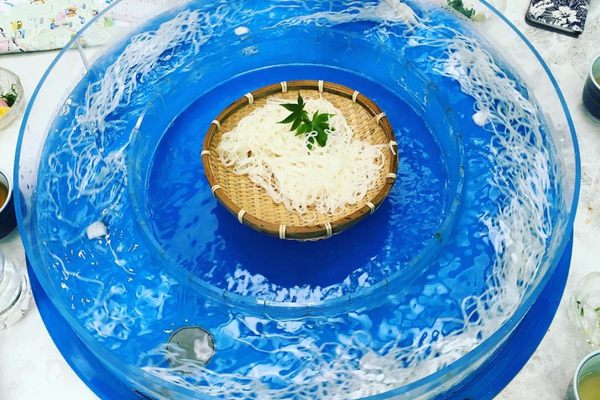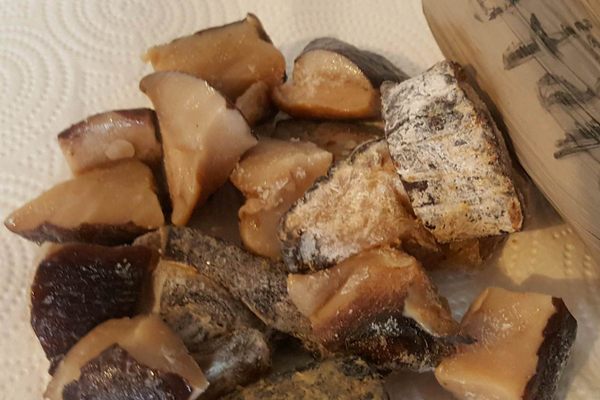If you find yourself at a sushi restaurant in Japan’s Shiga Prefecture, duck beneath the noren, sidle up to the bar, and order one of the oldest forms of sushi, the funazushi, to experience one extremely fermented fish. Lake Biwa, located in the region, is the home of a Japanese carp known as nigorobuna, which is used to produce this traditional food. Taking one to three years to make, funazushi is considered a luxury, with well-aged fish fetching hefty sums.
The fish is packed in salt and left for at least a year in wooden barrels. It’s then dug out, mixed with rice, and packed away again for another two to three years for further fermentation. During the fish’s stint in the salt and rice mixture, the flesh begins to rot and the insides soften. The resulting taste can be closely akin to an extremely tangy cheese. Some diners even go so far as to relate the aroma and taste to ammonia.
Originally prepared for rice farmers, this fermented fish is now enjoyed by locals and even a few tourists who are open to experiencing its head-on funky flavor.
Written By
 thegoodishtraveler
thegoodishtraveler
Sources
- www.tokyofoundation.org/en/topics/japanese-traditional-foods/vol.-13-funa-zushi
- www.pbs.org/food/the-history-kitchen/history-of-sushi/
- www.cnn.com/travel/article/narezushi-sushi-japan/index.html
- www.foodrepublic.com/2017/08/14/sushi-smarts-funazushi/
- www.npr.org/templates/story/story.php?storyId=5436138















